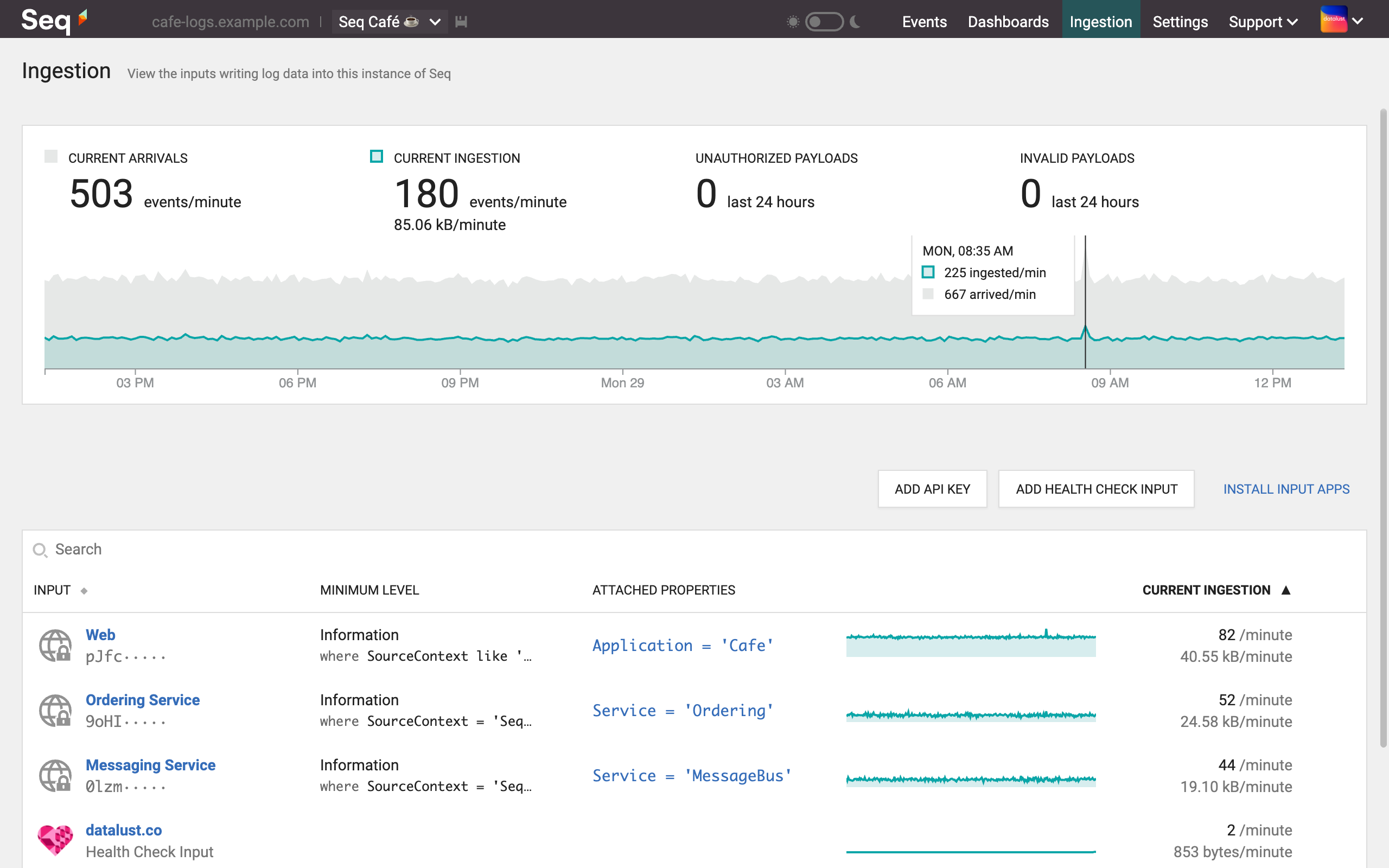Overview
Getting Logs into Seq
Configuring logging libraries
Most languages and frameworks have existing logging libraries, or logging APIs.
The most popular method for logging to Seq is through an application logging library. If you are new to Seq, that's a good place to start.
If your application uses a logging library that has direct support for Seq, such as Serilog, Pino, Microsoft.Extensions.Logging and many others, check the Getting Logs into Seq topic in the left sidebar for detailed documentation on these.
Otherwise, if your log source supports other popular formats and protocols, Seq can receive data from many of these, including OpenTelemetry Logs, GELF, Syslog, and plain HTTP.
In addition to logs you may wish to extend your telemetry data with tracing. Tracing adds causal relationships and timing data to events.
The Ingestion view
Managing log ingestion is the key to controlling costs and optimizing search performance. Seq makes this easy by providing a detailed breakdown of log traffic from the ingestion API and custom inputs, in Data > Ingestion:

Traffic coming from the ingestion API is split based on API Keys. It's a good idea to provision a unique API for each individual application that can log to Seq. This makes it easier to identify and respond to traffic spikes.
Updated 5 months ago
